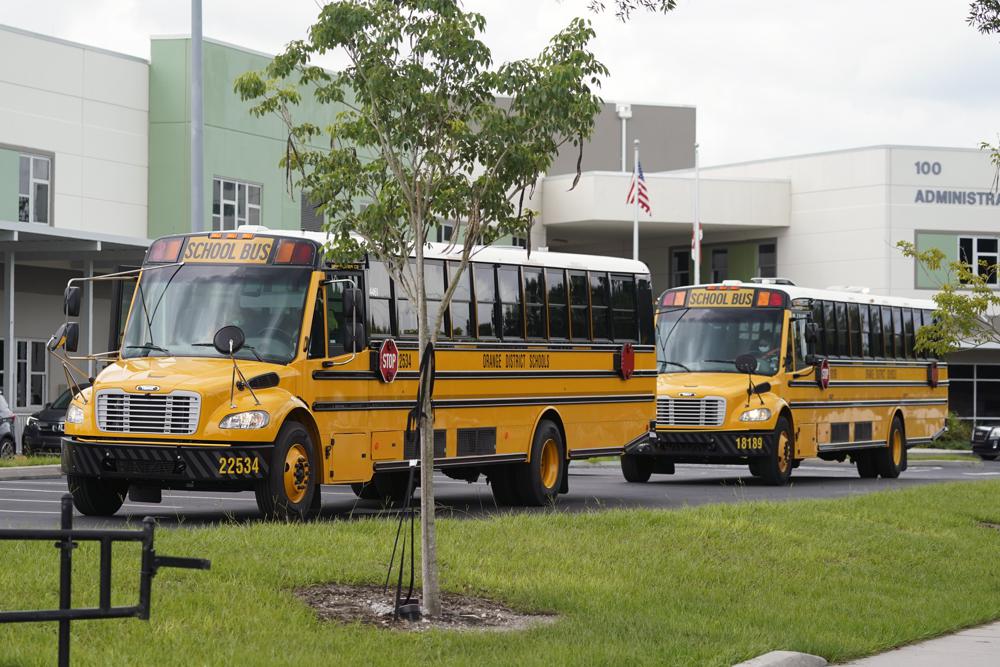
When McKenzie McAliley, a senior at Atlantic Community High in Delray Beach along Florida’s East Coast, took the bus to school, she would wake up at 5 a.m. and walk to the bus stop in the dark.
McAliley, 18, now drives to school but must get up just as early. After school, she babysits and is involved in eight clubs. She doesn’t arrive home until late and estimates she gets only about five hours of sleep every night.
“I’ve been getting sick a lot because I’ve been so run down,” she said. “Even if I just had an extra 30 minutes, I’d be able to rest and probably do better in school overall.”
In Tallahassee, the Legislature is considering proposals that would mandate later start times for middle and high schools in all districts, giving students like McAliley extra time to sleep.
The House bill, introduced by Republican Rep. John Paul Temple of The Villages, would require middle schools to start no earlier than 8 a.m. and high schools no earlier than 8:30 a.m. by 2026. Based on research from the American Academy of Pediatrics about the biology of adolescents and sleep, the bill also would require district school boards to inform their communities about the impacts of sleep deprivation.
Research conducted by the academy in 2014 indicates the average teenager has difficulty falling asleep before 11 p.m. and should wake up at 8 a.m. or later.
The bill passed the House 92-20 at the end of last month with bipartisan support. Dissenting votes were all from Democrats. A companion bill in the Senate, sponsored by Sen. Danny Burgess, a Zephyrhills Republican, is moving more slowly and passed two committees so far.
About half of public high schools in Florida begin before 7:30 a.m., so high school students who want to catch the bus often must wake up as early as 5 a.m.
Having an 8:30 a.m. start time is “the sweet spot” for schools across the state, said Samantha Green, the parent of a sophomore at J.W. Mitchell High in New Port Richey, north of Tampa.
Her 16-year-old daughter starts school at 8:20 a.m. so the bill wouldn’t dramatically affect her, but Green said the bill gives students the opportunity to sleep a little later and still get out of school at a reasonable time for extracurricular activities or work.
Because of bus driver shortages, Green said she lost bus service this year because she lives within two miles of the school. For students who don’t catch a bus, an 8:30 a.m. start time means parents can drop off their kids before heading to work, she said.
The health benefits and three-year implementation period justify the need for this change for legislators like Temple.
“The science clearly shows that if students in middle school and high school get more sleep, that has a positive impact not only on academics, their mental health, it’s safer,” Temple said.
Transportation concerns worry school board members like Erica Whitfield, who has wanted to delay school start times in Palm Beach County for years. Bus driver shortages and a lack of funding have stood in the way.
“The reason we’ve never done it, it’s not for lack of interest in starting later. It’s because we’re facing a massive bus driver shortage right now without this legislation in place,” she said.
The Legislature said it wasn’t sure how much the change may cost school districts, saying there “may be a significant, but indeterminate, fiscal impact to school district transportation costs.”
School start times are established based on bus routes. In Palm Beach County, bus drivers arrive to the compound at 5 a.m., pick up high school students for their 7:25 a.m. start, then move to elementary school students, who start around 8 a.m., and finish with middle schoolers, who begin at 9:30 a.m.
This schedule gives drivers enough time — roughly 90 minutes in between rounds — to pick up and drop off three sets of students. Districts are mandated to bus any student who lives over two miles from their school. Palm Beach is a larger district with about 170,000 students.
“If we can get more drivers, we could actually afford more buses,” Whitfield said. “We have plenty of buses to do all the routes we need; we just need more drivers to drive those routes.”
To avoid any additional costs, districts could shift all start times later.
During a Senate education committee hearing, Sen. Lori Berman, a Boynton Beach Democrat, said the Boynton Beach Superintendent raised concerns about the bus driver shortage and how the bill would affect bus drivers completing their routes.
“In a perfect world we would have so much money that we could buy more buses and we could get more bus drivers, but we’re not in a perfect world unfortunately,” she said.
In Manatee County, which includes Bradenton on Florida’s West Coast, school board member Chad Choate deals with bus driver shortage issues firsthand.
“We’re trying to hire bus drivers now and just cannot, so that is a concern for me,” Choate said. “I think if we are going to change, we may need to get more help with transportation funding.”
The proposed bills do not provide any direct funding to school districts. It would not go into effect until 2026, giving districts three years to find solutions to transportation issues.
“We have three years to get this in place and we need to do something because the mental health, we have an issue,” Temple said.
___
This story was produced by Fresh Take Florida, a news service of the University of Florida College of Journalism and Communications. The reporters can be reached at [email protected] and [email protected]. You can donate to support our students here.



